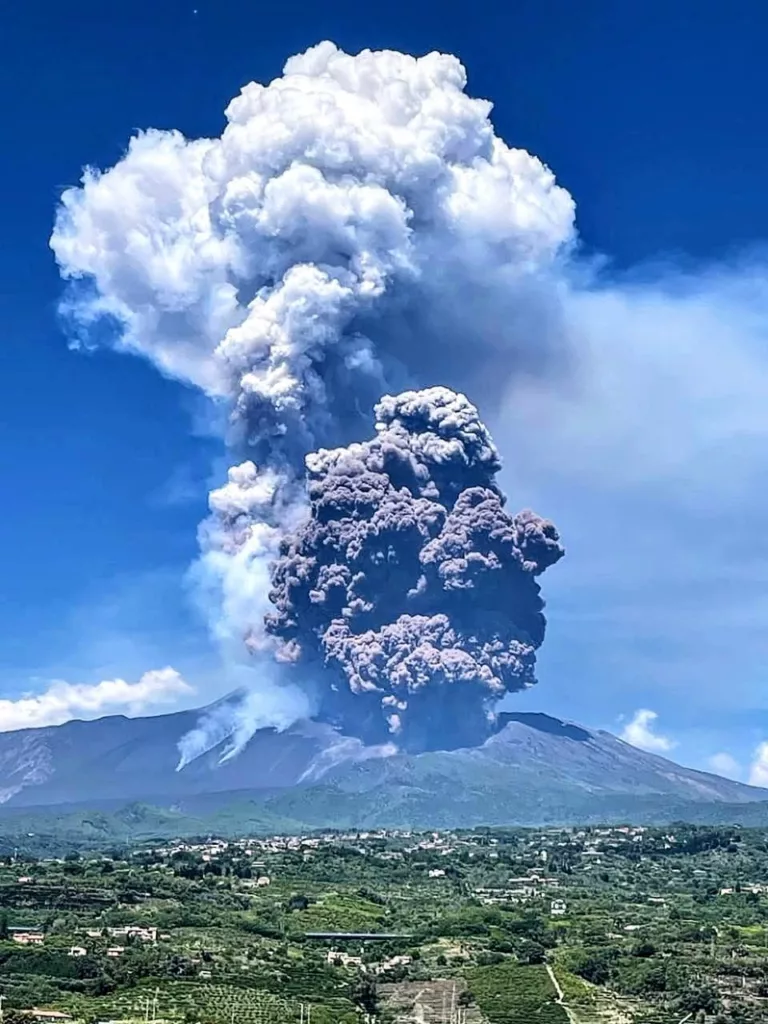Mount Etna, Europe’s largest active volcano located in Italy, released a large cloud of ash, gas, and rock on Monday. The eruption took place around 11.24 am local time, according to Italy’s National Institute of Geophysics and Volcanology. A thick grey cloud was seen rising from the volcano on the island of Sicily.

Authorities confirmed that there was no immediate danger to people living nearby. The lava flow had not reached the Valley of the Lions, a popular tourist area. However, officials advised tourists to avoid the region for safety reasons, as the situation could still change.
The agency reported that the eruption included a pyroclastic flow, likely caused by a collapse of material from the northern side of the volcano’s south-east crater. Pyroclastic flows are highly dangerous, involving a fast-moving surge of volcanic rock, ash, and hot gases.
The volcanic activity later shifted into what scientists call a lava fountain. The ash plume from the eruption was expected to move towards the south-west.
Videos shared on social media appeared to show tourists moving quickly down the volcano, some stopping to take photos, but these videos could not be verified.
Europe’s tallest active volcano, Mount Etna, has begun erupting in Italy. pic.twitter.com/aR8Ha1IxR5
— NEXTA (@nexta_tv) June 2, 2025
Today's Mount Etna eruptions seen from the International Space Station by NASA astronauts Nichole Ayers and Anne C. McClain pic.twitter.com/VBmJfZ3GZq
— Black Hole (@konstructivizm) June 2, 2025
The eruption also led to a red alert for aviation, with the volcanic cloud reported to have reached a height of 6.5 kilometres, or over four miles. Despite the eruption, the nearby airport in Catania continued to operate normally.
Local authorities are monitoring the situation closely and have urged caution while tracking the developments around the volcano.


